- Home
- Mark Twain
The Mysterious Stranger Manuscripts (Literature) Page 2
The Mysterious Stranger Manuscripts (Literature) Read online
Page 2
In the rest of the story, Twain's notes suggest that he intended to picture once more some of the life of his own I boyhood as a background for 44's tricks and miracles and reforms. But he also planned to introduce two serious actions. Forty-four was to fall in love with "Hellfire Hotchkiss" and to discover how tame, how "purely intellectual," was the happiness of hell compared to this mortal love. He was also to form an Anti-Moral-Sense Sundayschool and to print his own catechism with the aid of "slathers of little red . . . devils" specially brought up from hell. ("If Satan is around, and so much more intelligent and powerful than God, why doesn't lie write a Bible?" Twain wrote in his notebook in June 1898).12
Why Mark Twain let this story lapse after a moderately promising beginning when he had dozens of ideas for continuing it is problematical. Perhaps certain inherent contradictions within the character of 44 and in his projected actions proved too great for Twain to resolve. Apparently he wanted to make his stranger both a boy and an angel, both a companion to Tom and Huck and a Prometheus-figure who was to enlighten the citizens of St. Petersbur; concerning the damnable Moral Sense. The strain of this double purpose, only a little evident in "Chronicle," appears more clearly here.
Version D. "No. 44, The Mysterious Stranger," or "Print Shop" version, is a story of 530 manuscript pages, set like "Chronicle" in Austria, but in 1490, not long after the invention of printing. Late in 1902 Mark Twain altered the first chapter of his "Chronicle" manuscript to fit this new setting; but, intending to revise further, he left the linkages to his new version loose and imperfect. Father Adolf and Father Peter, for example, who are important in "Chronicle," play only minor roles in the new plot, and Marget and Wilhelm Mcidling never reappear. Between November 1902 and October 1903, while in Florence for his wife's health, Twain wrote chapters 2 through 7 or 8, which represent the trials of No. 44 as a printer's devil in a "mouldering" castle. Most of the printers abuse him, but Katrina, the cook, and Heinrich Stein, the master, openly support him, and August Feldner, the young narrator, secretly sympathizes with him. These chapters reach their climax when 44 masters the printing trade in a few hours, and, just as a major printing job is nearing completion, the compositors call a strike against the master.
Twain completed the next sequence, from chapters 8 or 9 through 25, in the first six months of 1904. In this stretch of narrative, 44 saves Stein from ruin with the help of the wandering jour printer Doangivadam and Katrina and August. He completes the Bible-printing contract by creating invisible Duplicates of the printing force (shades of Colonel Sellers as a scientist!), creates havoc in the castle by incarnating the Duplicates, and immolates himself before the entire group. In this fashion, the print-shop action comes to an end. Except for the parable of human suffering embodied in the plight of Johann Brinker and his family, Twain's new plot complications tend to be either fantastic or feeble. FortyFour plays tricks on Balthasar Hoffman, the magician, and on Father Adolf, and he explains the difference in the human psyche between the Workaday-Self and the DreamSelf. By the time August Feldner/Martin von Giesbach falls in love with Marget Regen/Elisabeth von Arnim and grows jealous of Emil Schwarz, his DreamSelf's embodiment, Mark Twain has turned the idea of double personality into the triad of Waking-Self, DreamSelf, and Immortal Spirit and has even endowed Schwarz with some of the powers of 44. All these developments take place in something like a dramatic vacuum.
When Twain returned to the story in June and July 1905 in Dublin, New Hampshire, he evidently saw that his grip on the plot had weakened, for he destroyed some of the most recent pages and "Burned the rest (30,000 words) of the book this morning. Too diffusive"-that is, a block of the story following chapter 19. He managed to make his new matter (chapters 26 through 32) considerably livelier than his love story, although it is still "diffusive" and disjointed. FortyFour transforms Marget's maid into a cat, plays Mister Bones in a Christy minstrel show, simultaneously attacks Mary Baker Eddy and Imperial Russia, undergoes a second apotheosis, and releases Emil Schwarz from the bonds of flesh. He satirizes a sentimental poem and turns time backward. Somehow, in the midst of this farrago of burlesque and satire, Twain created a minstrel-show vignette memorable for its humor and sentiment, and composed Schwarz's eloquent, serious, and startling plea for release from the bonds of "this odious flesh."
The plea of Schwarz to his alter ego for freedom also prefigures the "empty and soundless world" in which August is left after 44's historical pageant of skeletons has passed by. This episode, placed here as chapter 33, was written last, in 1908, and Twain may have intended it as an alternate ending to the whole. The "Conclusion of the book," however, is his own notation at the head of the dreamending-the six manuscript pages written in the spring of 1904 and placed in this text as chapter 34. It seems more likely therefore that he wrote the pageant chapter as part of an effort-never fulfilled -to link the body of his story to the "Conclusion of the book."
Characters
Twice Mark Twain tried to place his fable of man's meanness and misery in "St. Petersburg" and the years of his boyhood, and twice he found it necessary to move it to Austria and a remoter era. Though he tended to regard time and place as unimportant and easily changeable, his effort to reuse the "Matter of Hannibal," as Henry Nash Smith has called it,19 suggests that he may have been drawing characters from memory. The likelihood grows as one reads "Villagers of 1840-3," a manuscript of late 1897 which was written shortly before Twain composed the "St. Petersburg Fragment," the first sequence of "Chronicle," and "Schoolhouse Hill." For "Villagers" is an impressive set of thumbnail biographies of persons in Hannibal that suggests total recall, modified by black humor. Most of the names, as Dixon Wecter and Walter Blair have shown, were names of real persons, though a few, including the Clemenses', were disguised."
In the "St. Petersburg Fragment," for example, Tom Sawyer and Huck Finn were the chums of "Pole" before the author made the names appropriately Austrian-Theodor, Nikolaus, and Seppi. Very likely the name "Pole" was derived from Napoleon Pavey, the son of a Hannibal hotel-keeper. In "Villagers" he "went to St. Louis. Gone six months-came back a striker, with wages, the envy of everybody." He "became second engineer. . . . Got drowned." Sam Clemens had lodged with a Pavey family as a young jour printer in St. Louis from 1852 to 1853.16 Similarly, "Mr. Black" (Father Peter in "Chronicle" and "No. 44") is inspired by Orion Clemens, the good-hearted, dreamy, older brother who vacillated for a lifetime in his religions, jobs, and moods and who had no unkindness in him. Clemens for many years helped support Orion and his wife Molly; they aroused in him both sympathy and acute exasperation. In "Schoolhouse Hill" Oli•ier Hotchkiss, a more complex figure based on Orion, is still sympathetic but often comic. Twain identified him in a marginal note thus: "0 had mental perception but no mental proportion." 16
. Contemporary events in Vienna as well as family and Hannibal history provided Mark Twain with ideas for characters in "Chronicle." Deputies Wohlmeyer and Fuchs in the Austrian parliament during the autumn of 1897 furnished only their names. Father Adolf, however, originally Father Lueger in the manuscript, derived distinct and unpleasant traits from Twain's repeated impressions of Dr. Karl Lueger, Burgomeister of Vienna and leader of the anti-Semitic Christian Socialists.17 The priest's bull voice and gross physique come to mind in descriptions of Deputy Schonerer-"vast and muscular, and endowed with the most powerful voice in the Reichsrath." 18
"Schoolhouse Hill" is closely related to "Villagers" and to Hannibal people other than Orion and Pamela Clemens. Tom and Sid Sawyer, Huck Finn, and Becky Thatcher reappear at a second remove from the humorist's boyhood friends. But the Scottish schoolmaster, Archibald Ferguson, is a semifictional representation of Sam Clemens's teacher, William O. Cross," and the school bully, Henry Bascom, owes a substantial debt to the son of a Hannibal slave-trader, I Beebe, who "kept that envied slaughterhouse" and to whom "Joe Craig sold . . . cats to kill in it." 2° Perhaps the most vital of all the characters is the elderly slave-woman Aunt Rachel, who reports so tel
lingly the offstage feats of 44. Though Twain may have been drawing on his memories of Aunt Hanner and Uncle Dan'l, his uncle John Quarles's slaves, who had served him more than once as models, he probably was thinking of Aunty Cord, a Negro servant in the Crane household at Elmira, whom he described to Howells in 1877 as "cook, aged 62, turbaned, very tall, very broad, very fine every way." 21 It was Aunty Cord, in the character of Aunt Rachel, whose "A True Story, Repeated Word for Word as I Heard It" Twain sent to the Atlantic in 1874. Of the "Villagers" characters in "Schoolhouse Hill," one more remains whose past life was to affect the plot. Crazy Meadows, whom 44 rescues from the blizzard, is identified in Twain's working notes as "Crazy Fields [who] lost wife, then child; because wife nursed sm. [small] pox patient who had no friend." Further notes linking "C. F." to Dr. James Radcliff of I whose three sons went mad, indicate that Twain intended to present Fields's life history as a paradigm and a commentary on the Moral Sense.`2
Mark Twain carried Father Peter and Father Adolf over from "Chronicle" to "No. 44, The Mysterious Stranger," but assigned them minor roles. Father Peter's niece, renamed Gretchen, quickly disappears. The magician, in contrast to his predecessor Merlin in A Connecticut Yankee, serves merely as a cog in the plot. And most of the compositors in Stein's print shop are present simply to torment 44 and August Feldner. Four important characters, however, are new: Katrina, Doangivadam, the narrator August Feldner, and Johann Brinker. Each possesses some vitality. All four are related to Clemens's youth or to his early experience as a printer's devil. Twain may have drawn Katrina (who is "swarthy") from his memory of the Negro cook who fed him and two other apprentices in the printing-shop kitchen of Joseph Ament, editor of the Hannibal Missouri Courier.23 Unquestionably he modeled Doangivadam upon Wales McCormick, a fellow apprentice in Ament's shop. As Clemens remembered McCormick, he was a giant of seventeen or eighteen, a "reckless, hilarious, admirable creature," high-spirited and irreverent without limit-and therefore well suited to the fictional role of defending his abused juniors 24 For the most part, August Feldner, the young narrator, is as fearful as his champion is bold, and he comes to life most poignantly when he confesses that the tough compositors fastened upon him a nickname so humiliating he could only hint at its meaning by an abbreviation: "B.-A." he says in the text; "bottle-a'd" Twain writes in a marginal note; "bottle-assed" is the word in printer's jargon. It is a fair guess that August speaks for the youthful Clemens when he says that this "small thing" shamed him "as few things have done since." Brinker's years as a blind and paralyzed deaf-mute-with the suffering they bring for his mother and sisters-follow his performance of a generous deed. His is the fate which Nikolaus Baumann in "Chronicle" escaped by his early death, and it is similar to that of Tom Nash of Hannibal.
Satan, alias "No. 44," is the primary character in all three manuscripts and the most complex in his acts, his satirical bent, the "fatal music of his voice," his Socratic way of speaking, and his origins. To adapt Whitman's figure, he forms one side of a Square Deific.25 In Mark Twain's theology, he is the truth-speaker momentarily banished from heaven, the preacher Koheleth, the new Prometheus who is "courteous to whores and niggers." 29 He thus usurps certain functions of Christ the consoler who, says the head clerk in "Captain Stormfield's Visit to Heaven," has saved as many worlds as there are gates into heaven-"none can count them." The Father of the Old Testament and Missouri Presbyterianism forms the second side of the square-severe, jealous, and vengeful. He is distinct from but sometimes shades into the eternal Creator, the third side, of whom Clemens thought in astronomical terms-a supernal Power not so much indifferent to men as wholly unaware of them. FortyFour is speaking for this last, greatest deity when he tells Theodor that "Man is to me as the red spider is to the elephant."
Of the Quadernity, it is Satan the rebel, nonetheless, who figures most often in Twain's writings and who exhibits the richest development.-' Young Clemens's first impression of the devil, recorded sixty years later, was so strong that, he says, he tried at age seven to write Satan's biography-only to be frustrated by the paucity of facts and his Sundayschool teacher's shocked resistance.28 If this yarn seems something less than petrified fact, one must credit Clemens's claim that he had read the entire Bible by the time he entered his teens, and take seriously his remembered fear during a thunderstorm that the devil was coming to claim the soul of the original Injun Joe. Even more significant is his recollection of how he and others conspired to abuse the character of Satan in his mother's presence to see how she would react. As they had ex pected, Jane Clemens was "beguiled into saying a soft word for the devil himself." She could not remain silent or passive when "hurt or shame [was] inflicted upon some defenseless person or creature"not even the arch-sinner 29 Years later, when as a cub pilot on the Mississippi he was reading Shakespeare and Milton, Clemens wrote in a letter to Orion, "What is the grandest thing in 'Paradise Lost' -the Arch-Fiend's terrible energy!" 90
Then in 1867, shortly before-be sailed for the Holy Land, the journalist Clemens encountered in a New York library another memorable figure in the apocryphal books of the New Testament. For his Alta California readers he quoted: "Jesus and other boys play together and make clay figures of animals. Jesus causes them to walk; also clay birds which he causes to fly, and eat and drink. The children's parents are alarmed and take Jesus for a sorcerer...." The resemblance of the boy Jesus to Philip Traum is unmistakable."
Satan in the Bible and Paradise Lost and the youthful Jesus of the Apocrypha are thus essential components of the matrix in which Mark Twain shaped his mysterious stranger. Thirty years later, the figure began to take form. The process began, it seems, with Clemens's bankruptcy, the death of • Susy, and Jean's first epileptic seizures, and it continued during Olivia Clemens's decline into invalidism. In 1895 Twain recorded a dominant mood and a ruling idea in this notebook entry: "It is the strangest thing, that the world is not full of books that scoff at the pitiful world, and the useless universe and the vile and contemptible human race-books that laugh at the whole paltry scheme and deride it. . . . Why don't I write such a book? Because I have a family. There is no other reason." 32 That this question relates to the Mysterious Stranger tales as well as to Twain's "gospel," What Is Man? (which he would begin in 1898), is hinted at in a cryptic entry made a month later, "What uncle Satan said." '3 By the summer of 1897 Twain was writing "Letters to Satan" inviting His Grace to "make a pleasure tour through the world," assuring Him, "You have many friends in the world; more than you think," particularly Cecil Rhodes and the European Concert." Then comes the notation late in June, "Satan's boyhood-going around with other boys and surprising them with devilish miracles," and in these words the "St. Petersburg Fragment" and "The Chronicle of Young Satan" were born."
During the next seven years while Mark Twain worked intermittently on the three related manuscripts,36 he also composed a stream of notes and shorter pieces, finished and incomplete, published and unpublished, all concerning some diabolic or angelic stranger. Some time before the Clemens family left the Hotel Metropole in Vienna in the spring of 1898, Twain wrote "Conversations with Satan," a fragment in which the devil appears, dressed like an Anglican bishop, with the features of "Don Quixotte," Richelieu, or Sir Henry Irving playing Mephistopheles, to discuss cigars with Twain.97 Later in 1898 Twain commented on or created three cognate characters. The first is the silent, august, black-clad figure of Death in Adolf Wilbrandt's "remarkable play," The Master of Palmyra, which Mark Twain saw at the Burg Theatre and praised warmly to American readers in the essay "About Play-Acting." 3a The second is the big, mysterious "passing stranger" of "The Man That Corrupted Hadleyburg," whom Richards in his delirium links to Satan and the "hell-brand." " The third is Twain's notebook hero-in-embryo, a descendant of Lilith, whose family escutcheon is a plain, clean slate, since he has no knowledge of good and evil, whereas the descendants of the Eve-branch bear the design of an apple core with the motto, "Alas!"40
Twain's opening allegation in "Concerning
the Jews," published in September 1899, is that he has no prejudices of race, color, caste, or creed-not even a prejudice against Satan, "on account of his not having a fair show." A crucial passage follows in which he strongly defends Captain Dreyfus, announces that he will undertake Satan's rehabilitation himself-if he can get at the facts and find an unpolitic publisher-and concludes that "A person who has for untold centuries maintained the imposing position of spiritual head of four-fifths of the human race, and political head of the whole of it, must be granted the possession of executive abilities of the loftiest order." 't This brilliant ironic passage, which may refer to "Chronicle" in the phrase about Satan's rehabilitation, ends most of Twain's peripheral attempts to sketch Satan or to use him for secondary argumentative ends. From the autumn of 1899 on, Twain concentrated his attention upon full, imaginative portraits of Satan and of 44 in the Mysterious Stranger stories."
Mark Twain began many other fables and fictions in the last decade of his writing life and completed a few. But the Satanic stranger who visits the earth and pities and judges men, dominated his imagination and guided his pen in those years, trailing dozens of lesser characters in his angelic wake.
Acts and Concepts
Just as one may glimpse in Clemens's own experience the origins of many characters in "Chronicle," "Schoolhouse Hill," and "No. 44," one may also find in the records of his life adumbrations of acts and concepts in the three stories. Four of these may be termed, by a kind of bastard shorthand, protracted death by water, mob cowardice and cruelty, the Creation minimized, and quarrels and warfare. By developing such motifs, with varying degrees of success, Mark Twain was suggesting that men and women have no need of any hell "except the one we live in from the cradle to the grave." `e The cause, he argued, was that the race was damned irrevocably, either by an indifferent-because-unconscious God or by the race's own defective nature-he never could decide which. Three other of Twain's concepts may be identified as the powers of laughter, music, and thought; the hierarchy of selves within the self; and the consoling view that life is a dream. These three qualify or explain the first four.

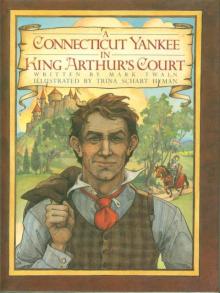 A Connecticut Yankee in King Arthur's Court
A Connecticut Yankee in King Arthur's Court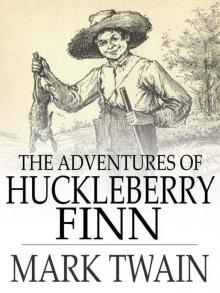 Adventures of Huckleberry Finn
Adventures of Huckleberry Finn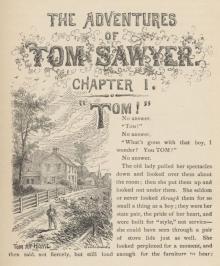 The Adventures of Tom Sawyer, Part 1.
The Adventures of Tom Sawyer, Part 1. The Prince and the Pauper
The Prince and the Pauper The American Claimant
The American Claimant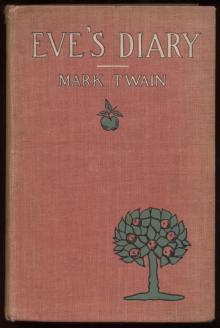 Eve's Diary, Complete
Eve's Diary, Complete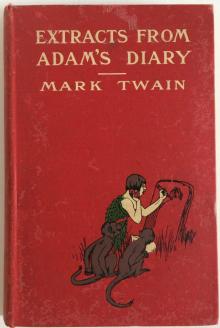 Extracts from Adam's Diary, translated from the original ms.
Extracts from Adam's Diary, translated from the original ms.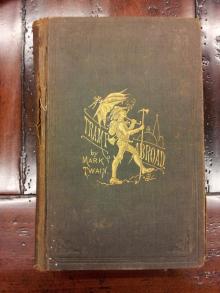 A Tramp Abroad
A Tramp Abroad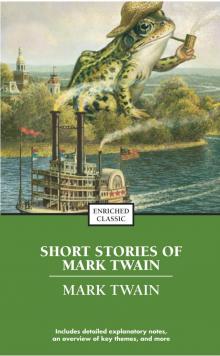 The Best Short Works of Mark Twain
The Best Short Works of Mark Twain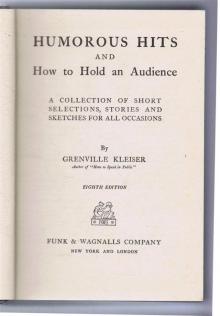 Humorous Hits and How to Hold an Audience
Humorous Hits and How to Hold an Audience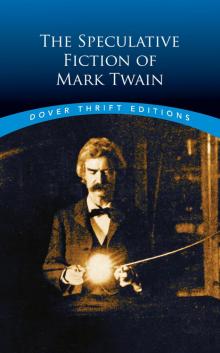 The Speculative Fiction of Mark Twain
The Speculative Fiction of Mark Twain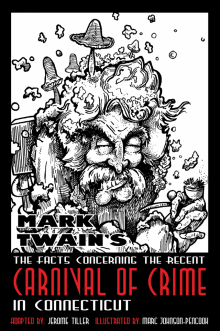 The Facts Concerning the Recent Carnival of Crime in Connecticut
The Facts Concerning the Recent Carnival of Crime in Connecticut Alonzo Fitz, and Other Stories
Alonzo Fitz, and Other Stories The $30,000 Bequest, and Other Stories
The $30,000 Bequest, and Other Stories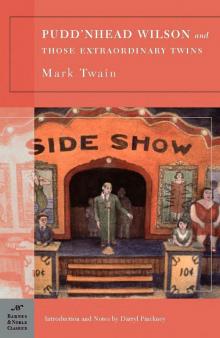 Pudd'nhead Wilson and Those Extraordinary Twins
Pudd'nhead Wilson and Those Extraordinary Twins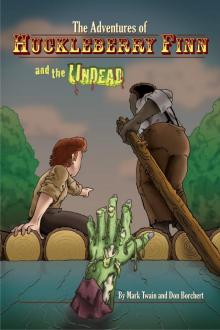 The Adventures of Huckleberry Finn and the Undead
The Adventures of Huckleberry Finn and the Undead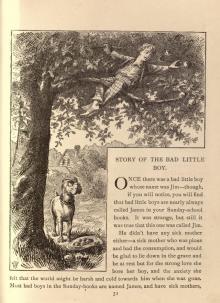 Sketches New and Old
Sketches New and Old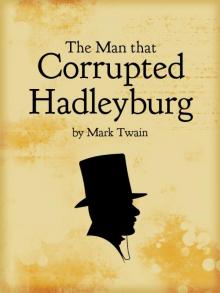 The Man That Corrupted Hadleyburg
The Man That Corrupted Hadleyburg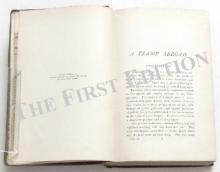 A Tramp Abroad — Volume 06
A Tramp Abroad — Volume 06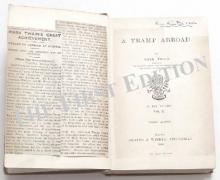 A Tramp Abroad — Volume 02
A Tramp Abroad — Volume 02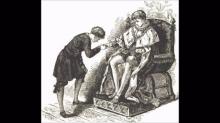 The Prince and the Pauper, Part 1.
The Prince and the Pauper, Part 1. Adventures of Huckleberry Finn, Chapters 16 to 20
Adventures of Huckleberry Finn, Chapters 16 to 20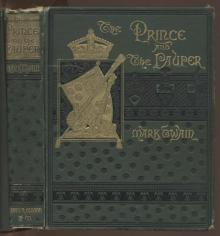 The Prince and the Pauper, Part 9.
The Prince and the Pauper, Part 9.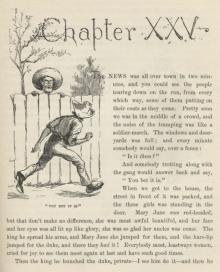 Adventures of Huckleberry Finn, Chapters 21 to 25
Adventures of Huckleberry Finn, Chapters 21 to 25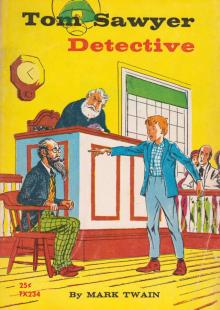 Tom Sawyer, Detective
Tom Sawyer, Detective A Tramp Abroad (Penguin ed.)
A Tramp Abroad (Penguin ed.) Adventures of Huckleberry Finn, Chapters 36 to the Last
Adventures of Huckleberry Finn, Chapters 36 to the Last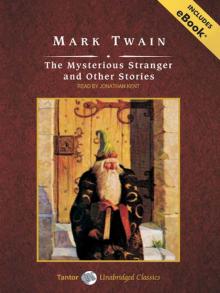 The Mysterious Stranger, and Other Stories
The Mysterious Stranger, and Other Stories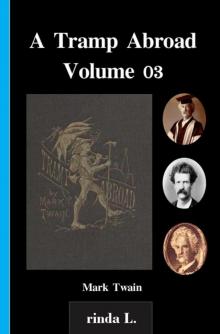 A Tramp Abroad — Volume 03
A Tramp Abroad — Volume 03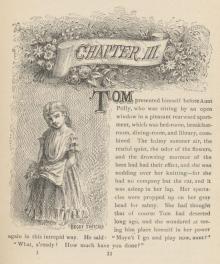 The Adventures of Tom Sawyer, Part 3.
The Adventures of Tom Sawyer, Part 3.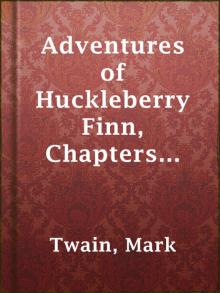 Adventures of Huckleberry Finn, Chapters 06 to 10
Adventures of Huckleberry Finn, Chapters 06 to 10_preview.jpg) The Adventures of Huckleberry Finn (Tom Sawyer's Comrade)
The Adventures of Huckleberry Finn (Tom Sawyer's Comrade)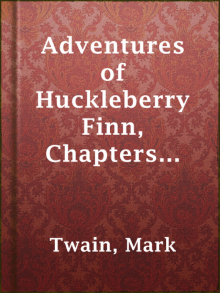 Adventures of Huckleberry Finn, Chapters 31 to 35
Adventures of Huckleberry Finn, Chapters 31 to 35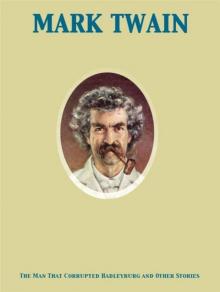 The Man That Corrupted Hadleyburg, and Other Stories
The Man That Corrupted Hadleyburg, and Other Stories A Tramp Abroad — Volume 07
A Tramp Abroad — Volume 07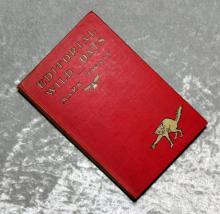 Editorial Wild Oats
Editorial Wild Oats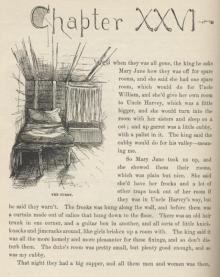 Adventures of Huckleberry Finn, Chapters 26 to 30
Adventures of Huckleberry Finn, Chapters 26 to 30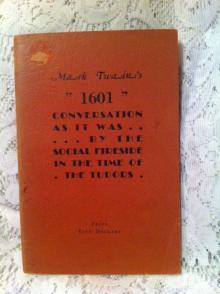 1601: Conversation as it was by the Social Fireside in the Time of the Tudors
1601: Conversation as it was by the Social Fireside in the Time of the Tudors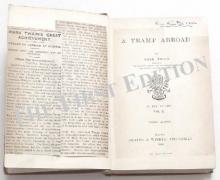 A Tramp Abroad — Volume 05
A Tramp Abroad — Volume 05 Sketches New and Old, Part 1.
Sketches New and Old, Part 1.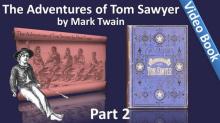 The Adventures of Tom Sawyer, Part 2.
The Adventures of Tom Sawyer, Part 2.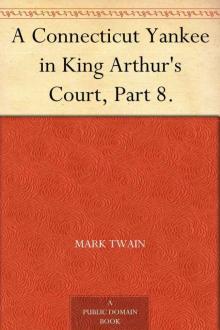 A Connecticut Yankee in King Arthur's Court, Part 8.
A Connecticut Yankee in King Arthur's Court, Part 8. A Tramp Abroad — Volume 01
A Tramp Abroad — Volume 01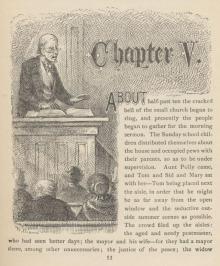 The Adventures of Tom Sawyer, Part 5.
The Adventures of Tom Sawyer, Part 5.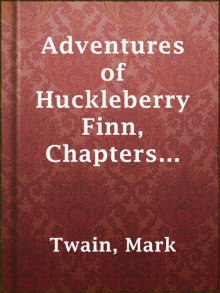 Adventures of Huckleberry Finn, Chapters 01 to 05
Adventures of Huckleberry Finn, Chapters 01 to 05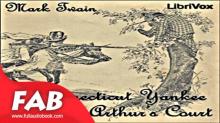 A Connecticut Yankee in King Arthur's Court, Part 1.
A Connecticut Yankee in King Arthur's Court, Part 1. The Adventures of Tom Sawyer, Part 4.
The Adventures of Tom Sawyer, Part 4. A Connecticut Yankee in King Arthur's Court, Part 2.
A Connecticut Yankee in King Arthur's Court, Part 2.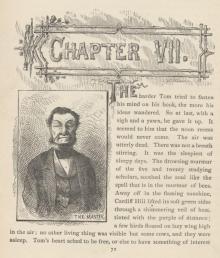 The Adventures of Tom Sawyer, Part 7.
The Adventures of Tom Sawyer, Part 7. A Connecticut Yankee in King Arthur's Court, Part 3.
A Connecticut Yankee in King Arthur's Court, Part 3. Sketches New and Old, Part 4.
Sketches New and Old, Part 4.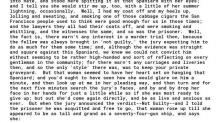 Sketches New and Old, Part 3.
Sketches New and Old, Part 3.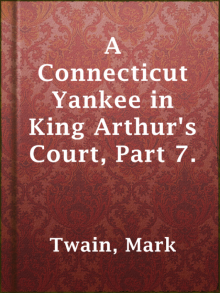 A Connecticut Yankee in King Arthur's Court, Part 7.
A Connecticut Yankee in King Arthur's Court, Part 7.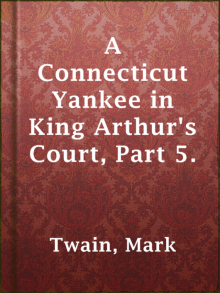 A Connecticut Yankee in King Arthur's Court, Part 5.
A Connecticut Yankee in King Arthur's Court, Part 5. A Connecticut Yankee in King Arthur's Court, Part 6.
A Connecticut Yankee in King Arthur's Court, Part 6. A Connecticut Yankee in King Arthur's Court, Part 4.
A Connecticut Yankee in King Arthur's Court, Part 4. Sketches New and Old, Part 2.
Sketches New and Old, Part 2.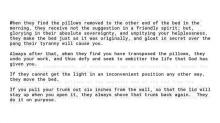 Sketches New and Old, Part 6.
Sketches New and Old, Part 6. Adventures of Huckleberry Finn, Chapters 11 to 15
Adventures of Huckleberry Finn, Chapters 11 to 15 Personal Recollections of Joan of Arc
Personal Recollections of Joan of Arc Sketches New and Old, Part 5.
Sketches New and Old, Part 5.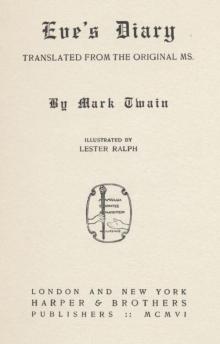 Eve's Diary, Part 3
Eve's Diary, Part 3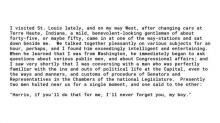 Sketches New and Old, Part 7.
Sketches New and Old, Part 7. Mark Twain on Religion: What Is Man, the War Prayer, Thou Shalt Not Kill, the Fly, Letters From the Earth
Mark Twain on Religion: What Is Man, the War Prayer, Thou Shalt Not Kill, the Fly, Letters From the Earth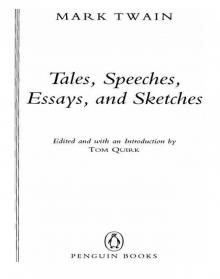 Tales, Speeches, Essays, and Sketches
Tales, Speeches, Essays, and Sketches A Connecticut Yankee in King Arthur's Court, Part 9.
A Connecticut Yankee in King Arthur's Court, Part 9. Our Fellow Savages of the Sandwich Islands (version 1)
Our Fellow Savages of the Sandwich Islands (version 1) 1601
1601 Letters from the Earth
Letters from the Earth Curious Republic Of Gondour, And Other Curious Whimsical Sketches
Curious Republic Of Gondour, And Other Curious Whimsical Sketches The Mysterious Stranger
The Mysterious Stranger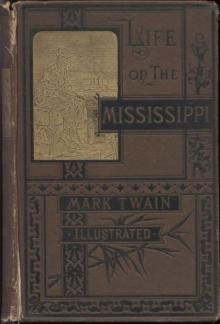 Life on the Mississippi
Life on the Mississippi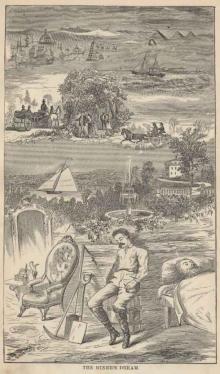 Roughing It
Roughing It Alonzo Fitz and Other Stories
Alonzo Fitz and Other Stories The 30,000 Dollar Bequest and Other Stories
The 30,000 Dollar Bequest and Other Stories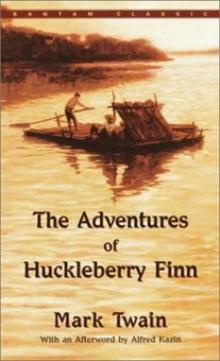 The Adventures of Huckleberry Finn taots-2
The Adventures of Huckleberry Finn taots-2 A Double-Barreled Detective Story
A Double-Barreled Detective Story adam's diary.txt
adam's diary.txt A Horse's Tale
A Horse's Tale Autobiography Of Mark Twain, Volume 1
Autobiography Of Mark Twain, Volume 1 The Comedy of Those Extraordinary Twins
The Comedy of Those Extraordinary Twins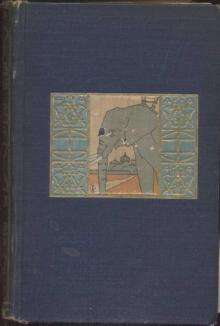 Following the Equator
Following the Equator Goldsmith's Friend Abroad Again
Goldsmith's Friend Abroad Again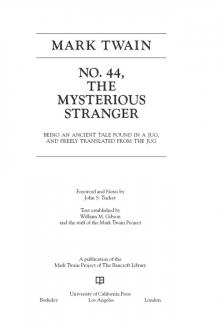 No. 44, The Mysterious Stranger
No. 44, The Mysterious Stranger The Stolen White Elephant
The Stolen White Elephant The $30,000 Bequest and Other Stories
The $30,000 Bequest and Other Stories The Curious Republic of Gondour, and Other Whimsical Sketches
The Curious Republic of Gondour, and Other Whimsical Sketches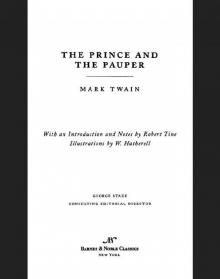 Prince and the Pauper (Barnes & Noble Classics Series)
Prince and the Pauper (Barnes & Noble Classics Series) The Portable Mark Twain
The Portable Mark Twain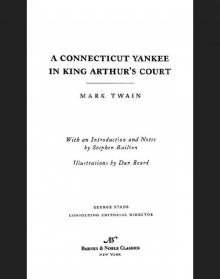 Connecticut Yankee in King Arthur's Court (Barnes & Noble Classics Series)
Connecticut Yankee in King Arthur's Court (Barnes & Noble Classics Series) The Adventures of Tom Sawyer taots-1
The Adventures of Tom Sawyer taots-1 A Double Barrelled Detective Story
A Double Barrelled Detective Story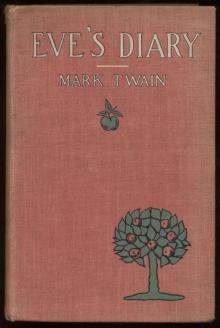 Eve's Diary
Eve's Diary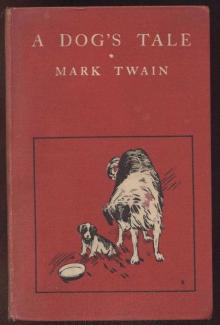 A Dog's Tale
A Dog's Tale The Mysterious Stranger Manuscripts (Literature)
The Mysterious Stranger Manuscripts (Literature) The Complete Short Stories of Mark Twain
The Complete Short Stories of Mark Twain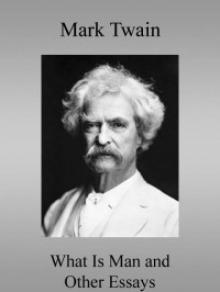 What Is Man? and Other Essays
What Is Man? and Other Essays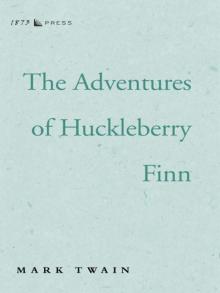 The Adventures of Huckleberry Finn
The Adventures of Huckleberry Finn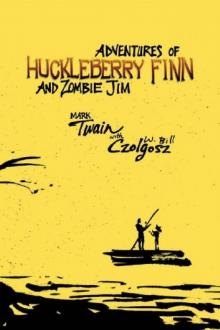 Adventures of Huckleberry Finn and Zombie Jim
Adventures of Huckleberry Finn and Zombie Jim Who Is Mark Twain?
Who Is Mark Twain? Christian Science
Christian Science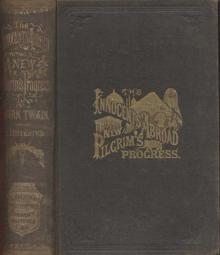 The Innocents Abroad
The Innocents Abroad Some Rambling Notes of an Idle Excursion
Some Rambling Notes of an Idle Excursion Autobiography of Mark Twain
Autobiography of Mark Twain Those Extraordinary Twins
Those Extraordinary Twins Autobiography of Mark Twain: The Complete and Authoritative Edition, Volume 1
Autobiography of Mark Twain: The Complete and Authoritative Edition, Volume 1